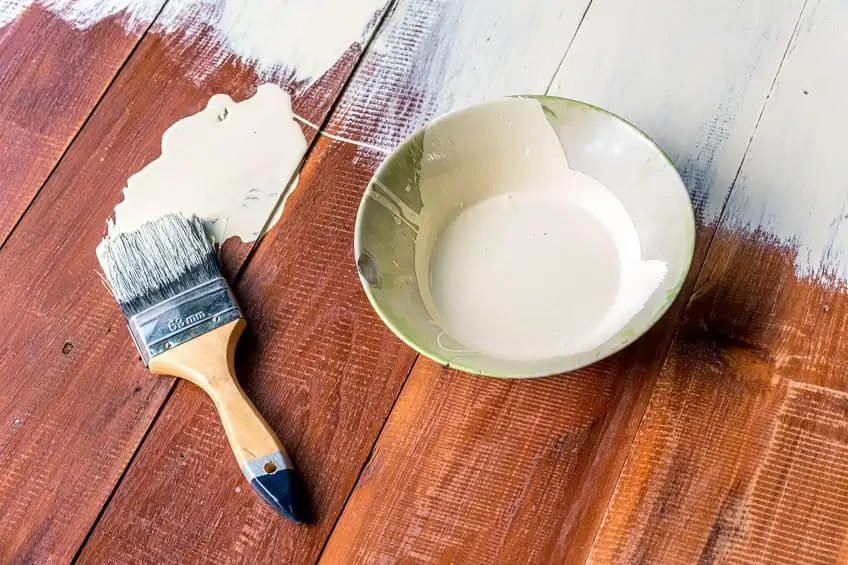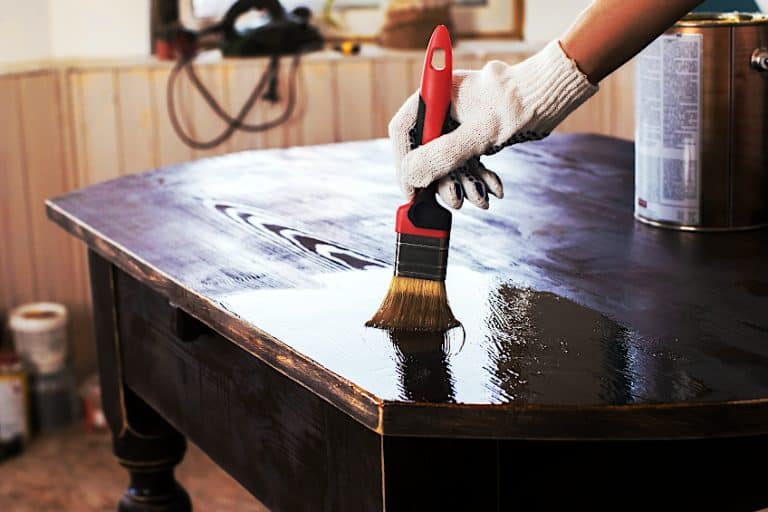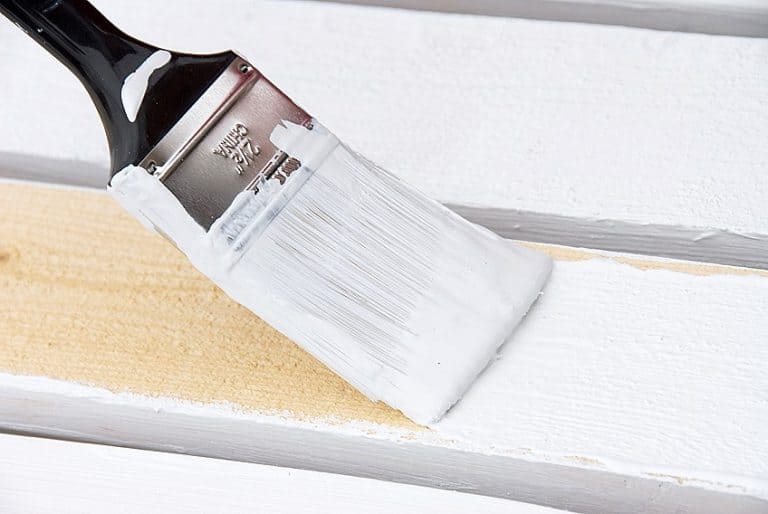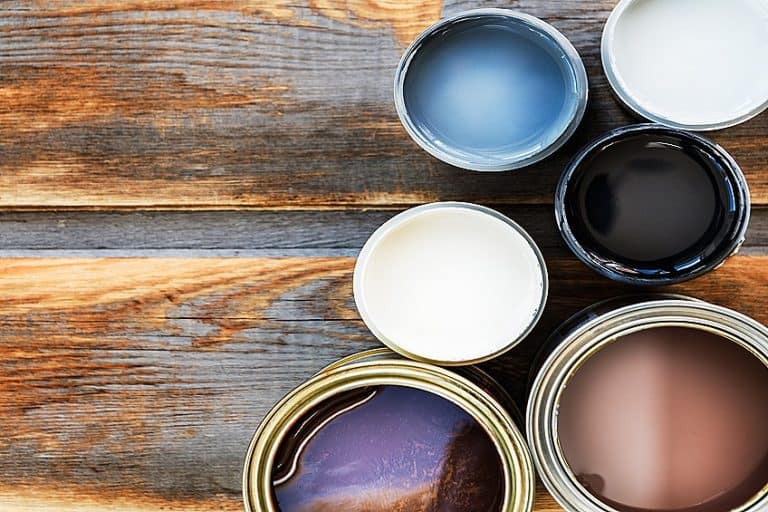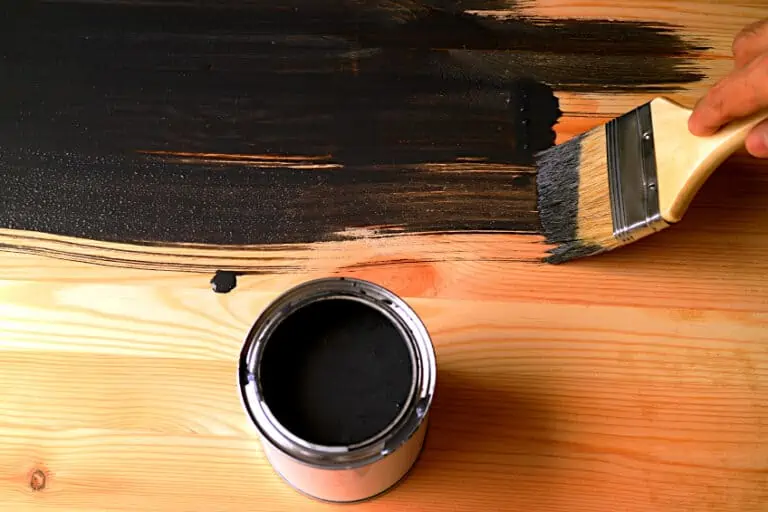Can You Paint Over Polyurethane? – Painting Over Varnished Wood
Picture this: You just inherited that long-awaited dining room table and matching chairs from your grandmother who downsized her house. It is your dream table, the best fit for your home! But… the pieces are worn from all the years of use! Your first thought might be to sand it down and re-varnish it. However, you will first need to check whether it was coated in polyurethane. If so, your job might not be as laborious as you think. Painting over polyurethane is very possible, and this guide on how to paint over polyurethane will set you on the right path!
Assessing the Condition of Your Polyurethane Surface
There are a few routes that might work for you, but it really just depends on the state of the existing polyurethane coat on the piece of furniture you wish to paint. This is a versatile project, so whether you are painting over a clear coat varnish or a polyurethane finish, you need to stake stock of any damages and how smooth the existing finish is before you start. The following guidelines will ensure that this job is not just half done.
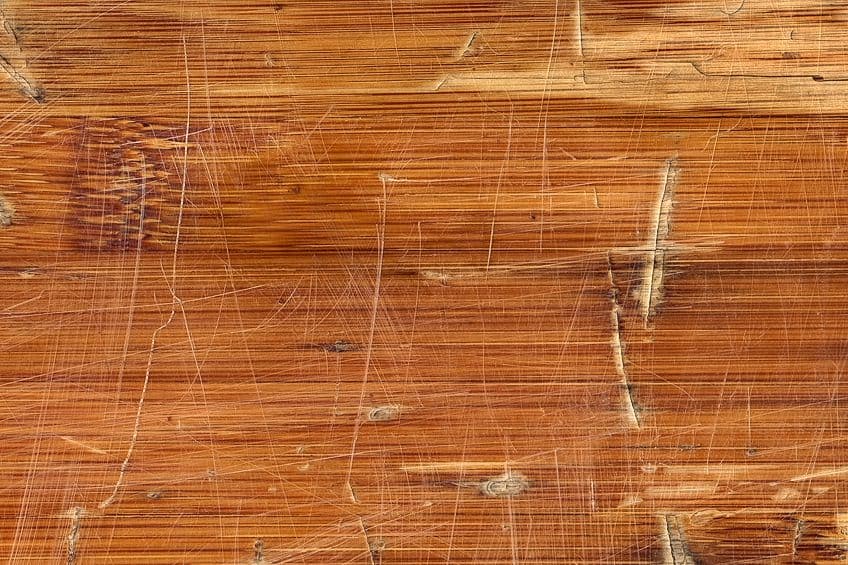
Minimal Wear and Tear
When the coat displays small signs of wear and tear, but there is no intense damage, you will not have to do too much work. All that is required here is to clean the surface you wish to paint and, if the original finish was a glossy one, to use light sandpaper and lightly rub it down to give it a rougher texture. This will ensure that the paint adheres to the polyurethane.
General Neglect and a Few Scratches
In this case, the surface you are painting needs to be sanded down to a smooth and even finish before you can do anything. Wood filler can be used to fill in any remaining gouges nicely. Once dry, you can sand down the wood filler again if necessary, and then clean the surface until it is free of any dust or residues. You can then begin to paint.
Serious Damage
Serious damage includes deep gouges that show the wood beneath the coat of polyurethane. This is probably not what you want to hear, but you will need to use a paint stripper to completely take away the original polyurethane coat. If you do not, your final result will be an uneven coat.
How to Paint Over Polyurethane
With the right method and materials, you should be able to paint over most polyurethane finishes. You will need to follow a few steps before the actual painting part in order to ensure that the paint adheres to the polyurethane coating.
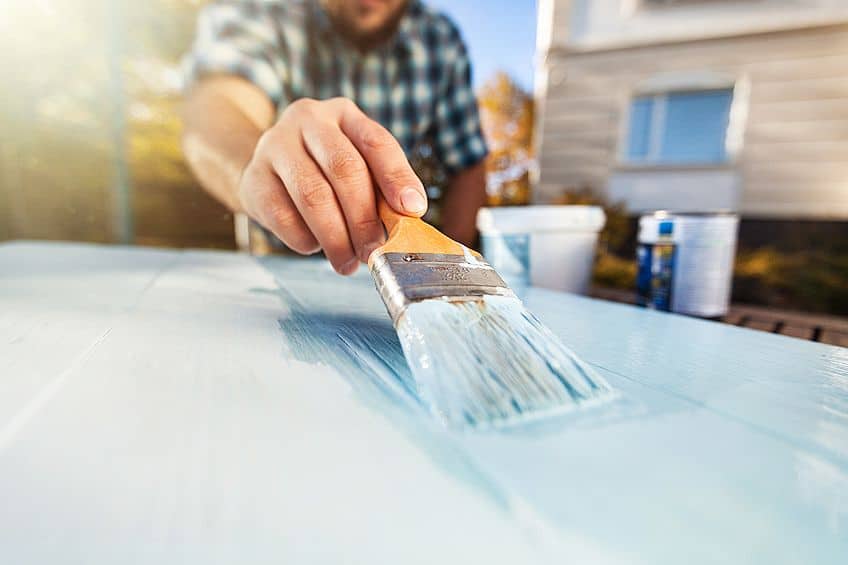
Before you head out to the paint supply store and buy the wrong paint, it might be a good idea to see whether the polyurethane you are painting over is water-based or oil-based polyurethane. This is just something to consider, but the actual method of painting over polyurethane will be the same for either type.
Paint prefers a rougher texture to a smooth or glossy one. If the original polyurethane coating has a glossy finish, then a sanding down is needed. This is essential as it will ensure that the paint sticks to the surface.
What Types of Paint Can You Paint Over Polyurethane?
The type of paint is not the issue with this task. The one issue would be if you did not perform the important task of preparation through sanding down and cleaning the surface. Failure to do this will end up in bubbly, uneven, and flaking paint. Thus, you can use most variations of water- and oil-based paints with great results provided you sufficiently prepare the surface.
Tools and Supplies Needed
- Cleaning cloths or rags
- TSP solution for cleaning
- Mineral spirits
- Protective gear:
- Respiratory mask
- Safety gloves
- Safety eye mask
- Protective clothing
- Liquid sandpaper (optional)
- Sandpaper of various grits
- Sanding machine (for larger surfaces)
- Oil-based primer
- Your choice of paint
- Suitable paintbrushes
Preparing the Wood Surface
Preparing the wooden surface is a vital component of the job. This is what ensures that your end result looks professionally done and lasts a long time. The first step is to clean everything off the surface, from dust to mildew to grime – clean it all. The best way to do this is by purchasing an extremely effective cleaning solution called Trisodium Phosphate, TSP.
The chemicals in such cleaning detergents are often harmful to your health, so make sure that you are wearing protective clothing and that you have appropriate ventilation throughout the entire process.
All you need is one-quarter of a cup of the TSP diluted in one gallon of water. Dip a sponge with a slight scour into the solution, and squeeze it out so that it is not too wet. Using a circular movement, rub down the wooden surface until there is no dirt left. You can use a brush with hard bristles if there are direct marks too hard to remove with a sponge.
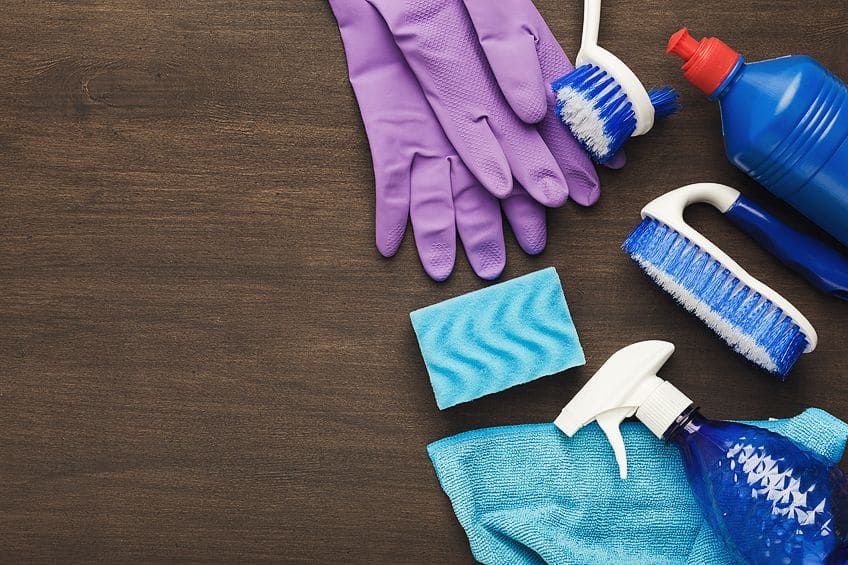
Some people find it hard to be around the chemicals in TSP for sensitivity reasons. If you are one of those people, there is the option of diluting one tablespoon of dishwashing liquid into one gallon of water, which poses less of a health threat. Another option is to use mineral spirits, although you will then need to make sure that you leave no trace of it behind after you are finished cleaning.
You will need to wait at least 15 to 20 minutes for the wooden surface to dry before you fill in the gaps of the damages with wood filler. We suggest using a palette knife for this process, as it will help to achieve a smooth result.
Sanding the Wood Surface
If you think that sanding down your wood surface is not a necessary step and that you can get away without it – think again. The sanding-down stage is vital to the lifespan of your project and ensures a smooth and even surface. If the question, “Will paint stick to polyurethane?” comes to mind, the answer is yes! But only if you sand it.
Safety precautions are always a must – you do not want those nasty wood and polyurethane particles to get into your eyes or lungs. Make sure that you are wearing your safety goggles, gloves, and respiratory mask prior to starting. If there is a yellowish tinge to the original polyurethane coat, then sand the surface with a sandpaper grit of 120 to 220. If not, you can begin with sandpaper of 60 to 80 grit.
What you are aiming for is a texture that feels slightly rough or gritty – this helps the paint stick nicely. If the wooden surface in question has a hole that goes inward, you will need to get your hands on a Dremel tool or a drum sander. Both will help get into that difficult-to-reach space. If it has curved detail, then a contour sanding grip is needed. Your sanding machine should be able to attach to both.
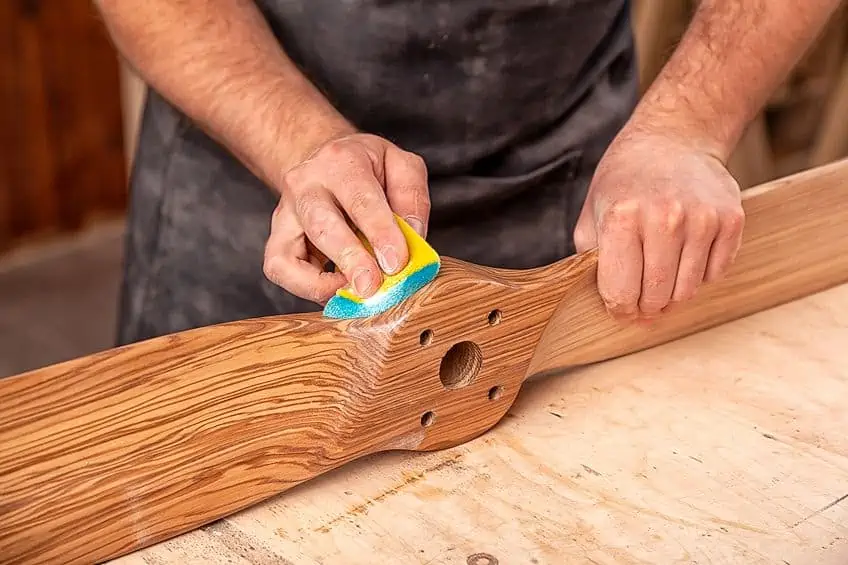
If you are manually sanding, keep to a circular movement for a more even look. Once the sanding is complete, you will need to clean up all the particles left behind. A hoover can be useful to prevent dust from flying around in the air. Once this is complete, your final step is to lightly dunk a cloth in mineral spirits and wipe down the surface thoroughly, collecting the last of the particles.
Perhaps you have allergies and the dust from sanding is not an option. Can you still do the job? Yes! Liquid sandpaper, or deglosser, was invented for larger areas as well as highly detailed pieces that are not possible to sand manually.
However, liquid sandpaper is quite toxic due to the presence of some intense chemicals in its formulation. Thus, certain safety precautions need to be taken. You can also test the liquid sandpaper on a small and hidden section of the wooden surface to make sure that it does not damage it further.
Applying the Primer
If you plan on forgoing the priming stage to cut out some time and just start with painting over a clear coat, you will be shooting yourself in the foot. The polyurethane resin has tannins that will eventually come through and will fade into a yellowish tinge. Not only that, but the paint will not adhere to the polyurethane. The primer is there to help the paint stick to the polyurethane surface as well as for an extra layer of protection.
Now that we have established the importance of priming your surface before you paint over it, we can start looking at the best primer suited for the specific surface you are planning to paint. It all depends on the original coating on the wood and the type.
So, should you use a water- or oil-based primer? The answer is a resounding oil-based primer. This is because water-based primers are not suitable for polyurethane finishes. We suggest going for a top-of-the-range oil-based primer with great bonding properties – try not to go for any old oil-based primer. This way, fewer layers will be needed, which is only a bonus!
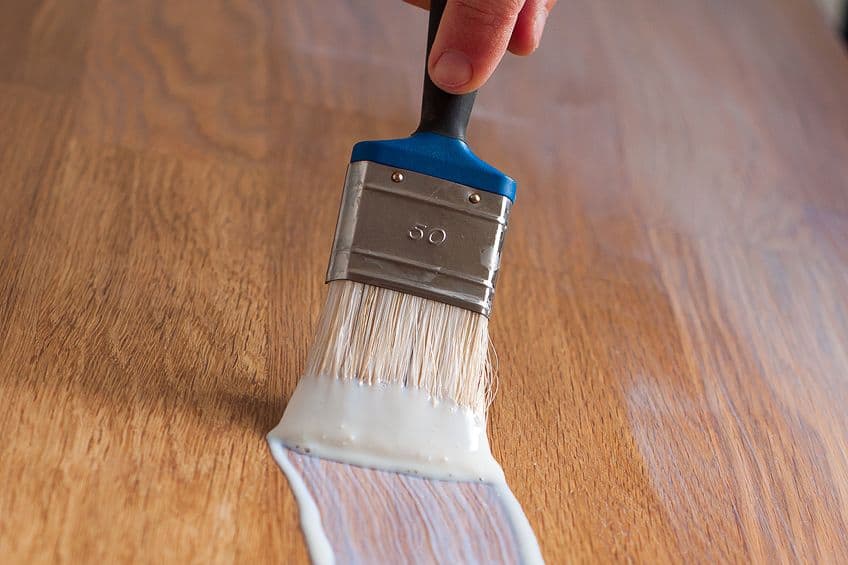
Oil-based primers require a natural-bristle brush for the application of smaller, more detailed areas. If the surface area is much larger, you can use a paint roller with a foam bit. The movement you make with the brush or roller should be continuous, going in a down-up motion.
Always read the instructions! Reading the label will inform you on how long you must wait for the primer to dry fully before you can apply a second coat or move on to the next step.
Before you jump the gun and start painting, you will need to get some sandpaper for the freshly primed surface and give it a bit of scuffing up. You need to remind yourself that it will ruin the whole look if you skip this step, as you will be left with stains and discoloration after the final layer is added.
Final Topcoat of Paint
Painting over varnish wood, painting over clear coat, or painting over polyurethane requires pretty much the same technique. But the dilemma of whether your oil- or water-based paint will stick to polyurethane or a varnish remains. Your primary answer is in the primer – have you done it or not? When you cast your gaze at your wooden surface, does it shine as a gloss finish would? This may be the reason why your paint is not sticking. In order to avoid this, follow these simple steps:
- Prepare the wooden surface by cleaning it of all dirt.
- Give the surface a sanding down after it has dried from being cleaned.
- Clean the surface of all dust particles from the sanding.
- Apply the appropriate primer.
Using a water-based paint will not be an issue if you ensure that you follow those steps. It will stick to the polyurethane, varnish, or whatever coating was originally there with ease provided that the surface has been primed. While oil-based paints are said to be more durable and long-lasting, they have a very strong odor and take a while to dry. Water-based paints, on the other hand, dry more quickly and have less of an odor, but they are not as durable.
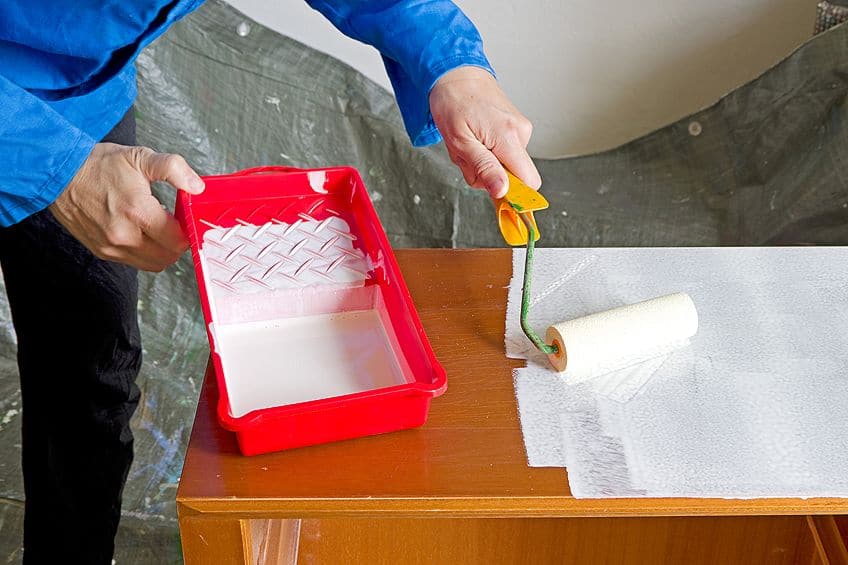
If time is not of the essence, then we recommend that using oil-based paint is a superior choice, as it offers greater durability and a longer lifespan. Regardless of your choice, we suggest that you prepare the surface in the same way, ensuring that you clean, sand, and then apply a primer.
If the surface area you are painting is large, it might be too time-consuming for a paintbrush to get the job done, and this might result in a messy look. A paint-roller with a foam bit is a better go-to for this size. Naturally, a smaller brush works best for the harder-to-reach, detailed areas. If you are fortunate enough to get your hands on a spray gun, this is your next best option, as it allows the most even coverage.
Make sure that you read the label of your paint can before you continue for more specific figures, but in general each individual coat should dry for about one hour before applying the next layer.
Some Useful Precautionary Tips for Painting Over Polyurethane
Of course, your safety is of the utmost importance, and therefore, appropriate protective clothing and gear should be worn at all times throughout this job. In case you are a newbie and you are not sure what gear we are speaking of, we have a list of precautionary suggestions to help keep you out of harm’s way.
- Always wear your protective gear. This includes protective gloves and clothing to protect your actual clothing and your skin from any harmful chemicals in the paints or cleaning detergents. This also includes a respiratory mask to avoid breathing in fumes, as well as protective goggles.
- Be warned – paints are flammable. Do not smoke in the workspace and ensure that no one lights a match near the paints.
- Make sure that you have decent airflow. Unless you are outside where there is ample fresh air, make sure that you keep all windows open for the fresh air to come in. Paint fumes can be quite toxic and leave you feeling dizzy or nursing a headache.
- Extreme weather will hinder the curing process. Avoid painting on days where the weather is too humid or raining too heavily, for it can negatively impact how the paint cures. Intense sun is also impactful.
- Be wise when you dispose of your leftover materials. The chemicals in the mineral spirits, cleaning detergents, and paints are extremely harmful, and there is a correct method for getting rid of any cloths used for cleaning.
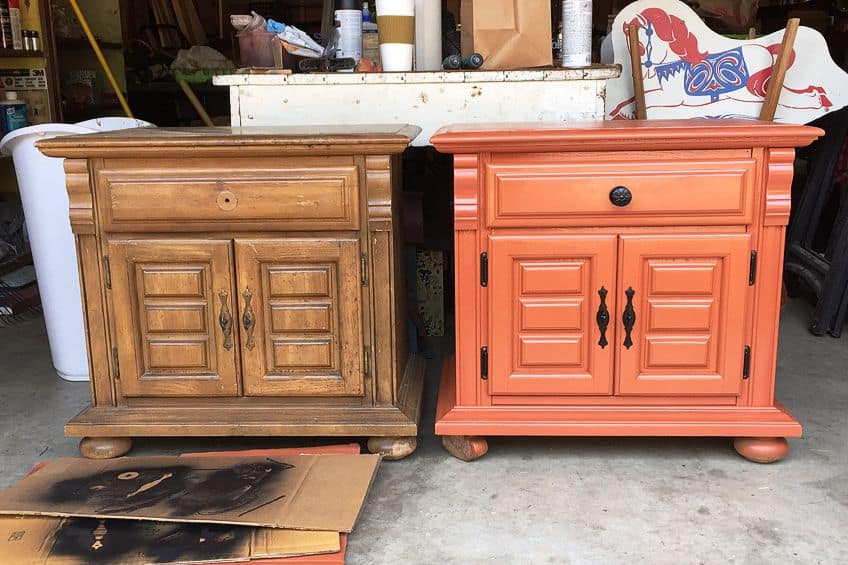
Frequently Asked Questions
Is Painting Over Polyurethane Possible Without Sanding?
It is possible if you are using paint that is oil-based, but it is not the best method. Regardless of whether you are painting with water- or oil-based paint, it is still recommended that you prepare, sand, and prime the surface for the best results.
Can You Apply Primer Over Polyurethane?
After you have cleaned the surface and sanded it down to give it a scoured texture, you can apply an oil-based primer to the polyurethane coating.
What Primer Can I Use to Paint Over Water-Based Polyurethane?
The best primer to use on either an oil-based or water-based polyurethane would be an oil-based primer.
What Does a Deglosser Do?
A deglosser, also known as liquid sandpaper, acts as a substitute for sanding your surface with sandpaper. Using a deglosser is fairly simple – just be sure to test it on a small and hidden area of the wooden item you wish to paint to make sure it does not damage the wood.
Do I Need to Sand After Using a Deglosser?
Fortunately, you do not. The point of a deglosser, which is also known as liquid sandpaper, is that you do not need to sand at all. Once you have applied it you can move on to the paint. No cleaning it off is necessary either. Just degloss and then paint.
Will Paint Stick to Polyurethane?
Yes, both water-based and oil-based paints will stick to a coating of polyurethane once you have followed the necessary preparation and priming techniques that we have iterated above.

I have been into woodworking since 2005 and woodturning since 2011. Because of my love for wood and woodworking, I started woodhappen.com to teach other enthusiasts about how to finish and seal wood, the best woodworking tools, the different types of wood, and everything else related to woodworking! Read more about me here.

